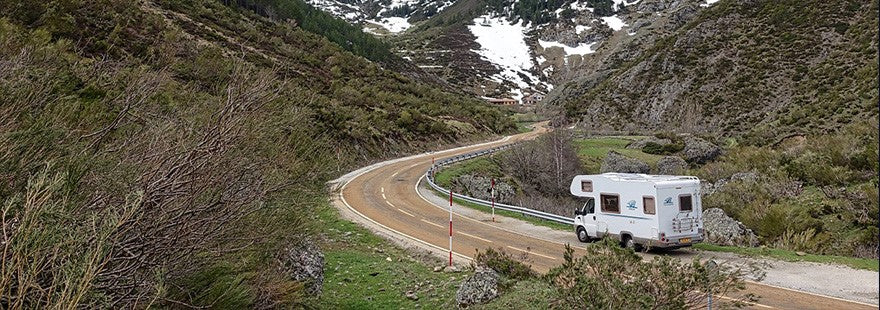Tips for Camper Battery Maintenance
Almost every car owner out there has a story about some disaster that befell them when they neglected their vehicle’s battery. Turning that key and getting no response can seem like the worst feeling in the world, especially in extreme conditions or when you desperately need to be somewhere. Many camper owners, however, seemingly fail to learn the lesson one should naturally take from these cautionary tales - that’s why so many camper batteries fail to last as long as they’re designed to. As a smart recreationalist, you know that getting as much as you can out of all of your camper’s components - especially one as important as the battery - will, in the long run, save you lots of money and hassle. If nothing else, doing so will significantly lessen your chances of having your own horror story to tell down the road.Camper Battery Basics
A camper battery - like any other battery - does not create power. It merely stores chemical energy that is then transformed into the electricity needed to power your camper’s engine and all of its electrical components. Camper batteries are uniformly the lead-acid variety and should be recycled once depleted - which leads us to the question of what causes that depletion. As you might suspect, the main drain on your camper’s batteries comes from when the vehicle is in use. What you might not know is that the camper drains energy from its batteries even when it’s off, as elements like onboard clocks, appliance circuit boards, and smoke detectors remain on at all times. What’s more, the elements - heat, specifically - can also play a significant part in lessening your battery life; battery life for vehicles in the hottest part of the country is approximately half that of those in the coldest.
Conservation
Luckily, there are several ways one can alleviate or altogether avoid the main contributors to the draining of battery life. One of the most important steps you can take is also one of the easiest - just disconnect the battery when you’re not using it. Doing so will keep on-board elements from draining its power when the camper’s not running. Though it can be annoying to disconnect the battery after every usage, better to have the power when you need it as opposed to keeping the clock running while your camper’s in the driveway. If your camper is equipped with a battery disconnect switch, simply turn it to off; if not, the battery cables can easily be removed from its case with a wrench. Your conservation efforts can also be assisted by keeping your camper out of hot conditions whenever possible. Just storing the vehicle in your garage (or covering it if it must stay outside) can considerably lengthen your battery’s life.
Charging Your Camper Battery
Your battery, no matter what steps you take, is eventually going to run out of juice. The important thing to keep in mind is not only that it can be recharged but that there are optimal times for a responsible owner to do so. First off, you’re going to need a battery monitor. This handy little device will tell you the charge left in your battery by displaying the voltage it’s putting out. Generally speaking, a battery with 100% charge will register at 12.7 voltage or more. Consider recharging when it gets as low as 12.4, as doing so will help to prevent sulfation (a build-up of lead sulfate crystals that can lead to a loss of cranking power and longer charging times). Allowing it to dip below 10.5 can result in a complete loss of charge and an inability to recharge. Also, be certain that your batteries are disconnected for at least twelve hours before measuring their voltage; doing so will ensure that you’re getting an accurate reading.
The charging process itself is relatively straightforward. Disconnect your battery if you haven’t already and clean any corrosive substance that may be on its connections. Though there are dedicated battery cleaning products out there, you can get a similar result from a paste of water and baking soda. Scrub the connections with your cleaner, wipe them clean with water and a rag, and apply petroleum jelly to prevent further corrosion. Next, connect your battery to the charger. Battery chargers come in a wide variety of models and capabilities - many experts recommend using a three-stage charger, as its processes are most suited to the way camper batteries store their energy. This process can take several hours but is necessary for the life of the battery to see all the way through - so be sure that you have the time you need to get it done. Finally, reconnect your battery and repeat the process for any other batteries in the bay that might need charging. A step-by-step illustrated guide can be found here if you still have questions.
Conclusion
Though it can be incredibly fun and freeing to take your camper out on the open road, you’ll be brought back to earth in an instant if a failed battery leaves you stranded in the middle of nowhere. Maintaining its batteries might not be the most fun part of owning your camper, but it’s an important step to take to ensure uninterrupted enjoyment for you and your family for years to come.
Let Us Help
Remember that Boat & RV Accessories has all the camper accessories you need to keep your recreational vehicle running at top condition and that you can always reach out to one of our friendly customer service representatives if you have any questions about camper or boat ownership. Happy camping!

